Supporting Transgender & Gender Non-Conforming Diverse Gender Voiceover Artists
 As a collective of voiceover artists who look and sound like America today, Blue Wave Voiceover includes talents who identify across the diverse spectrum of gender. Blue Wavers are deeply passionate about voice actors of all gender identities having equitable access to inclusive and affirming casting opportunities. We’re excited to see that the wider voiceover world is evolving towards more inclusive casting, particularly for actors who face daily discrimination, like transgender and gender non-conforming (TGNC) voice talents.
As a collective of voiceover artists who look and sound like America today, Blue Wave Voiceover includes talents who identify across the diverse spectrum of gender. Blue Wavers are deeply passionate about voice actors of all gender identities having equitable access to inclusive and affirming casting opportunities. We’re excited to see that the wider voiceover world is evolving towards more inclusive casting, particularly for actors who face daily discrimination, like transgender and gender non-conforming (TGNC) voice talents.
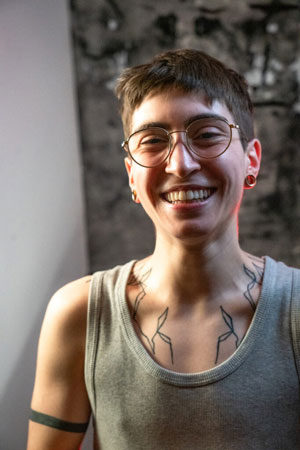 And we’re seeing an important shift in the world as well. More and more TGNC people are running for office like Brooklyn Owen, who is running for State Senate in Florida to pay it forward to the Jacksonville community who took her in when her family kicked her out as a teenager for being who she was. Many TGNC candidates are winning their races like Delaware Democrat Sarah McBride, the first transgender person elected to a state Senate and Oklahoma Democrat Mauree Turner (featured right), the first non-binary person elected to a state legislature. In mainstream media, trans visibility is at an all-time high with celebrities like Laverne Cox and Elliot Page taking to the covers of TIME magazine to tell their stories and Janet Mock directing the groundbreaking show “Pose” that spotlights NYC’s African-American, Latin and Hispanic LGBTQ+ ball culture in the ‘80s and ‘90s.
And we’re seeing an important shift in the world as well. More and more TGNC people are running for office like Brooklyn Owen, who is running for State Senate in Florida to pay it forward to the Jacksonville community who took her in when her family kicked her out as a teenager for being who she was. Many TGNC candidates are winning their races like Delaware Democrat Sarah McBride, the first transgender person elected to a state Senate and Oklahoma Democrat Mauree Turner (featured right), the first non-binary person elected to a state legislature. In mainstream media, trans visibility is at an all-time high with celebrities like Laverne Cox and Elliot Page taking to the covers of TIME magazine to tell their stories and Janet Mock directing the groundbreaking show “Pose” that spotlights NYC’s African-American, Latin and Hispanic LGBTQ+ ball culture in the ‘80s and ‘90s.
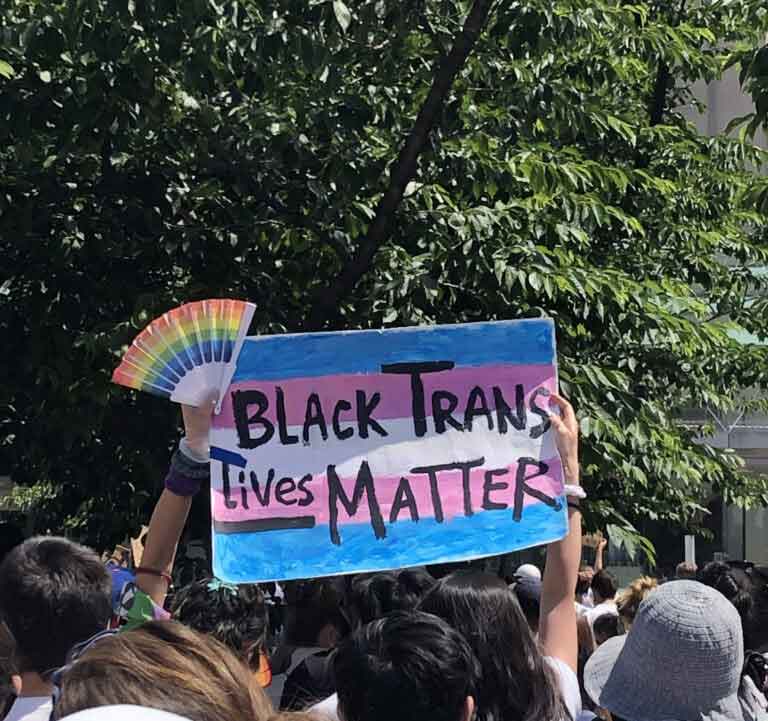
As voice actors and humans of all walks of life, Blue Wavers understand how critical – how life-saving – it is to not only celebrate diversity, but actively build inclusive and safe spaces everywhere for marginalized people. So here are a few tips from us on how to create safer spaces for transgender and gender non-conforming voiceover artists and all TGNC people.
And if you want to check out our talented TGNC voice talents, search artist bios here.
1. Learn & Use Inclusive Language
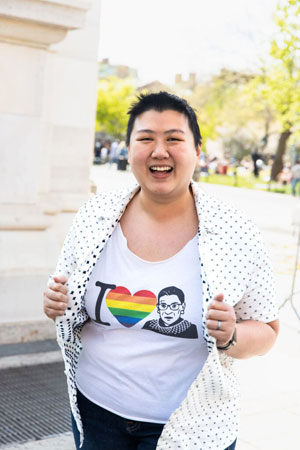
To get started, here are some helpful definitions from the Human Rights Commission’s Glossary of Terms:
Gender identity: One’s innermost concept of self as male, female, a blend of both or neither – how individuals perceive themselves and what they call themselves. One’s gender identity can be the same or different from their sex assigned at birth.
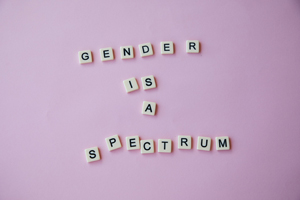
Gender Non-Conforming: A broad term referring to people who do not behave in a way that conforms to the traditional expectations of their gender, or whose gender expression does not fit neatly into a category. While many also identify as transgender, not all gender non-conforming people do.
Non-Binary: An adjective describing a person who does not identify exclusively as a man or a woman. Non-binary people may identify as being both a man and a woman, somewhere in between, or as falling completely outside these categories. While many also identify as transgender, not all non-binary people do. Non-binary can also be used as an umbrella term encompassing identities such as agender, bigender, genderqueer or gender-fluid.
Cisgender: A term used to describe a person whose gender identity aligns with those typically associated with the sex assigned to them at birth.
Even changing small but powerful phrases like saying “all genders” instead of “both genders” is important and makes a difference!.
Check out The Trevor Project’s Support Center for more LGBTQ+ 101 learning.
2. Share & Ask Pronouns
Pronouns are how you like others to refer to you when not using your name. 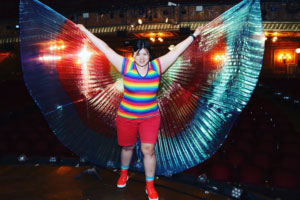
So how do you know someone’s pronouns? Ask! Nowadays, it’s common-practice – and totally okay! – to ask someone their pronouns. As in, “Hey my pronouns are they/she, what are yours?” or “I didn’t catch your pronouns before! I’m Marianna, she/her.” It may feel a little awkward at first but what’s more awkward – and harmful – is misgendering someone by assuming their pronouns. And according to The Trevor Project, “Transgender and nonbinary youth who reported having pronouns respected by all or most people in their lives attempted suicide at half the rate of those who did not have their pronouns respected.”
Meeting someone over email? Include your pronouns in your email signature and mention them when you e-intro yourself like “Hi Jamal, so happy to connect! I’m Em (they/them)!”

Golden rule: don’t assume. Everyone’s their own unique person so get to know them by sharing pronouns!
Check out GLSEN’s Pronoun Guideto learn more.
3. Stay Teachable

Accidentally used the wrong pronoun for someone? Apologize to them, correct yourself with the right pronoun, and move on. Then on your own time, practice!
Having a hard time learning new pronouns? Practice with a friend! Practice saying things out loud that you would actually say like “wow, they have the coolest voice!” or “yeah I hung out with them the other day and they brought their adorable dog!”
